November 2011
 |
There were 3 events this month. It started slowly with
the regular monthly flea market in Utrecht in the first weekend, then
picked up pace with the final meeting of the BEJC in Brussels in the
second weekend and ended with a big boom at the Collectors Fair in the
Jaarbeurs in Utrecht during the third weekend. But we'll take you
through it one at a time.
The flea market was only good for two modern decks this month, but it's
always a pleasure to walk around there. Over the years people start to
know you and sometimes approach you with decks. But mostly you just make
some small talk. This time lots of small talk, but no decent decks to
keep.
It was the final BEJC meeting. The club no longer exists as such. Of
course the members and former executives of the club will keep on
collecting playing cards/jokers and already some Belgian members have
organized a winter meeting in February. And then there will be the
spring meeting in Daknamdak in March, so we don't
have to fear that we
won't see the Belgian
|
|
collectors anymore. Still it was a little bit sad
to have to say goodbye to the Brussels Euro Joker Club. It was founded
in 1988 and since 1995 we've been a member and regular visitor of their
meetings.
The collectors fair in the Jaarbeurs is the largest bourse in the
Netherlands for collectibles. Although it's open for the public on
Saturday, with the right connections there are tickets to get for Friday
too. That's the day on which the sellers set up their stalls and often
good for nice finds. This time Miriam came along on Friday, but she
didn't find anything at all, while Joop dug up a nice Belgian deck from
around 1900. Saturday Miriam came along again and this time she
surprised everybody with a deck that has been in the top three of our
wish list for years and immediately qualified as...... DECK of the
Month! |
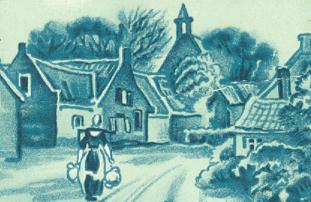
|
This deck is known here as the "Tegelkaart" (Tile card) and not
only because of the back design. The designs on the courts and aces are done in
a style and coloring that is similar to the famous Delft Blue tiles and pottery.
Especially in this version, which is done in blue tones and very recognizable
for the general public. There is another version of the deck, with the same
designs, but printed in the brown tones, as used on the backs of this
deck.

The deck was
printed and published by the Nederlandsche Speelkaarten Fabriek (NSF) and is
classified
in the "From NSF to SN" catalogue from 1986 as SN03. It is dated there
1909/1912. But compared with the other NSF decks, that were
published around that same time, this deck sticks out with its unusual and
innovative design. The other 2 decks have a more classic design on the
courts and one of them even shows a remarkable resemblance with the Cartes
Imperiales by Van Genechten.
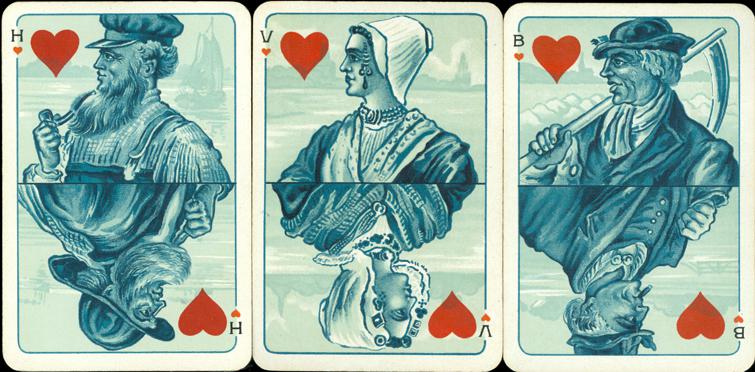
This deck has
innovative features and a very modern look for those days and we have always
believed that this was the hand of the new partner, Jos. Vas Dias, who entered
the company in 1909. He was an experienced lithographer and was probably also
responsible for the company's move from Utrecht to Amsterdam. There the
production facilities were set up in 1909 and the company's first products were
advertised in 1910. The first decks by NSF were of high quality
chromolithographic printing. Considering the heavy competition from Belgian and
German manufacturers in the lower quality segment of the market, it's probable
that the NSF company initially aimed to compete with the German high quality
manufacturers like Dondorf or Wüst.
For those who don't want to overstretch their
necks, trying to enjoy the opposite images.......we've scanned the cards
reversed too. Click HERE.


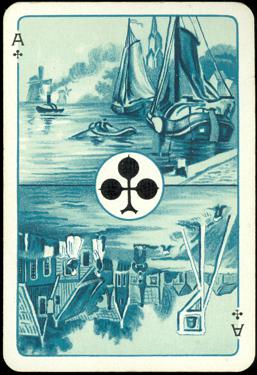
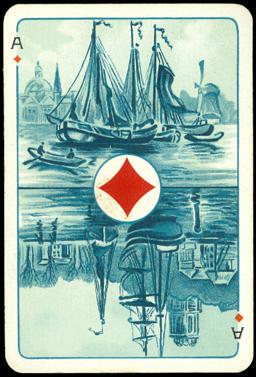
The deck has
several special features, besides the use of a single color in different tones.
The aces show typical Dutch scenes from everyday life in the countryside and not
famous buildings. The figures on the courts don't represent royalty, but simple
Dutch countrymen or fishermen, dressed in their familiar local costumes. On the
King of Clubs two lower public servants are depicted: the village constable and
the village "caller", who announced the latest news by shouting it in
the streets. Yet the
high quality of card and printing indicates that the deck was not aimed to be
sold to these countrymen.
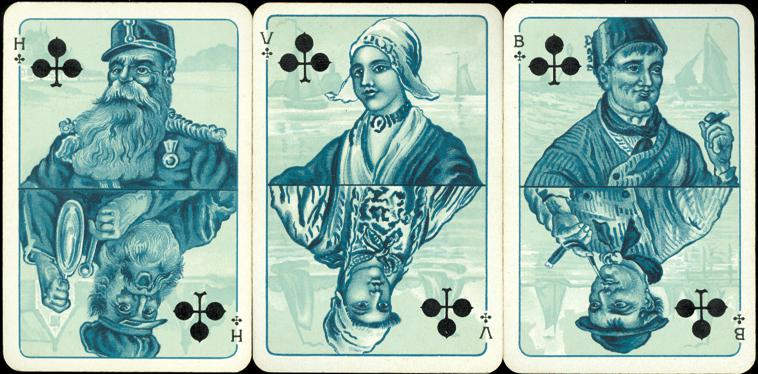
The figures on the
courts are set against a scenic background. As such not a new feature, it can already be found
on Belgian made decks from around 1890 too. But here the background is done in
very light tones, creating a hazy depth. This is innovative and new for that
decade and not often seen either. We can only think of the Dondorf centennial
deck, but that was made about 20 years later.
Not a special feature, but just something worth noticing is that the position of
the figures on the opposite sides of the courts is similar, thus slightly enhancing the
suggestion of a true double image. A "classic" element is that all the
Kings have a beard.
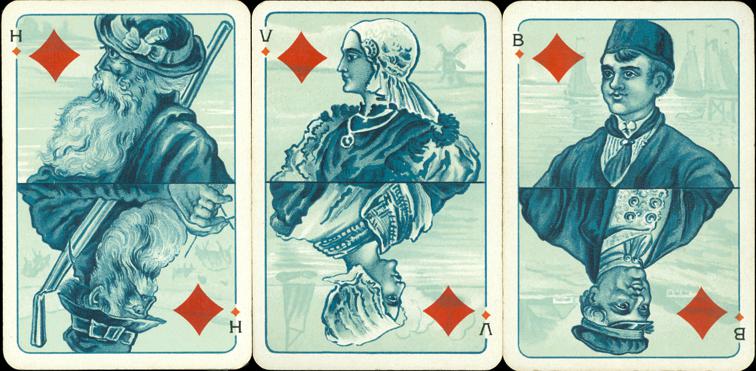
These hazy
background scenes can be found on each of the pips too. Just like on the
courts, it's not a double image, but each side of the card shows a different
scene. Each suit has its own background designs for the pips. Parts of six of
these designs have been
used to create the tiles of the back design.
There's one last feature, that should be pointed out. Some of you may already
have noticed that the indices in the red suits are printed in black on the
courts, while the numbers on the pips in these suits are printed in red. This
feature can be found in all the NSF decks. It was dropped when the company was
taken over in August 1912 and went on as Speelkaartenfabriek Nederland (SN), although some of
the NSF stock was later sold by SN too. Also typical for NSF decks are the flat
bottomed V's on the Queens.
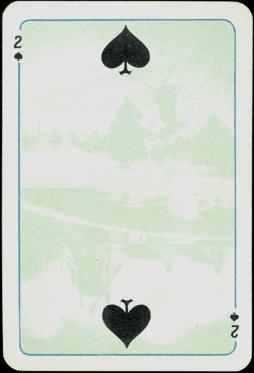
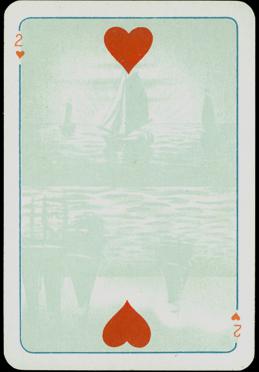
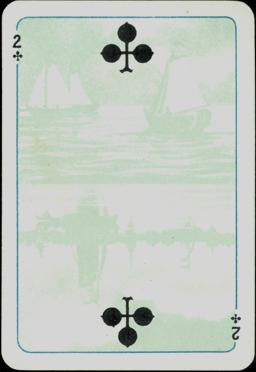
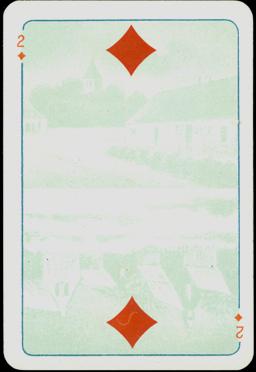
The deck consists
of 52 cards. No joker was issued with this deck, but sometimes an extra card
with the company logo and a short text was added.
It didn't come with our deck, neither did the box, but.........who's
complaining, when you find such a beautiful rare deck.
BACK TO PRESENT MONTH













